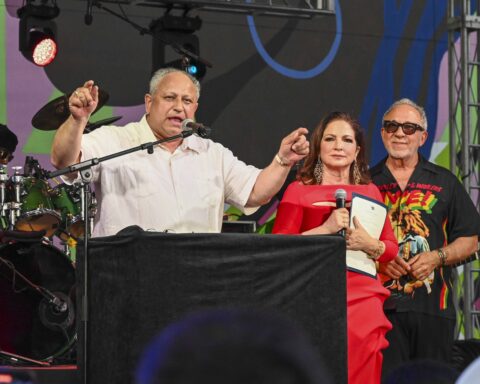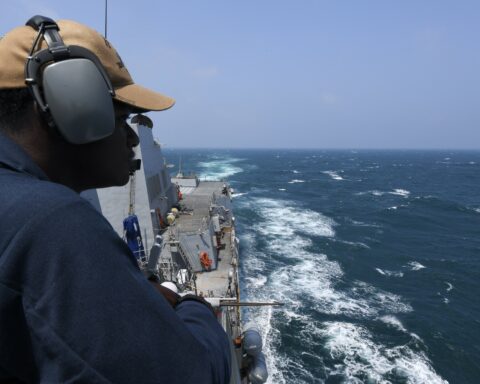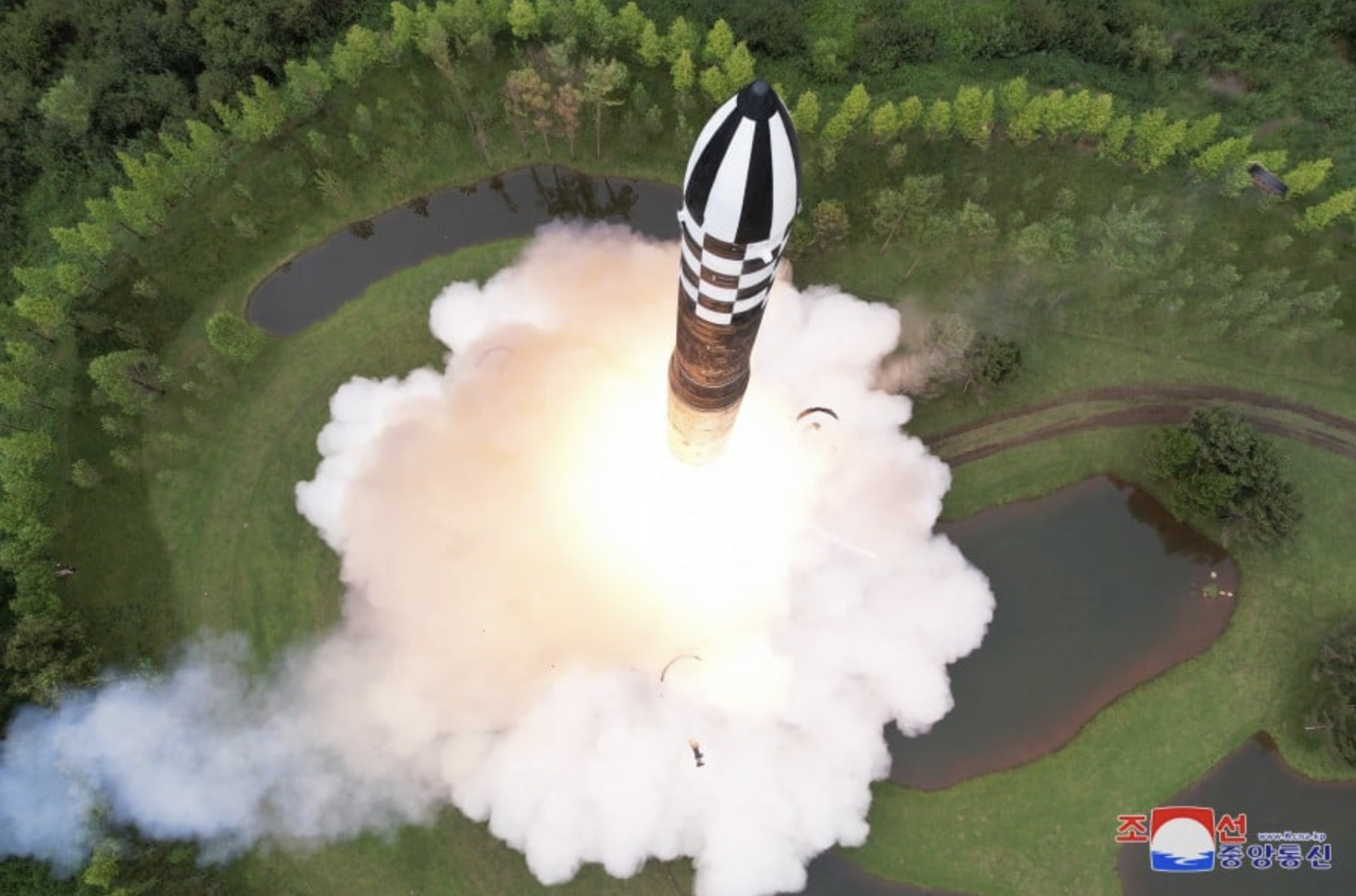
North Korea launched two ballistic missiles into the sea off its east coast this week, with its military stating that the launch was in response to a joint flight the same day by U.S. Air Force B-1B bombers and Republic of Korea Air Force fighter jets.
The North Korean military claimed the launch was practice for countering a preemptive nuclear strike against North Korea.
“On Aug. 30 the U.S. imperialists let a formation of B-1B nuclear strategic bombers conduct a joint attack formation drill against the DPRK together with fighters of the military gangsters of the ‘Republic of Korea’ in the sky above the East and West Seas of Korea,” read a Wednesday statement the General Staff of the Korean People’s Army that was carried by North Korean media.
The statement went on to say that the bomber drill was carried out at the height of the U.S. – ROK exercise Ulchi Freedom Shield, which it called“a serious threat to the DPRK as it was just pursuant to the scenario for a pre-emptive nuclear strike at the DPRK.”
In response, the North Korean military staged a tactical nuclear strike drill simulating “scorched earth strikes” at major command centers and operational airfields in South Korea, according to the statement. A KPA tactical nuclear missile unit at Pyongyang International Airport fired two tactical ballistic missiles northeastward to simulate a nuclear air burst at a preset altitude of 1,300 feet above the target island.
“The drill is aimed to send a clear message to the enemies, who responded the DPRK’s repeated warnings with such military threat[s] as deployment of strategic assets, and make them clearly realize once again the DPRK’s resolute punitive will and substantive retaliation capabilities,”the statement said.
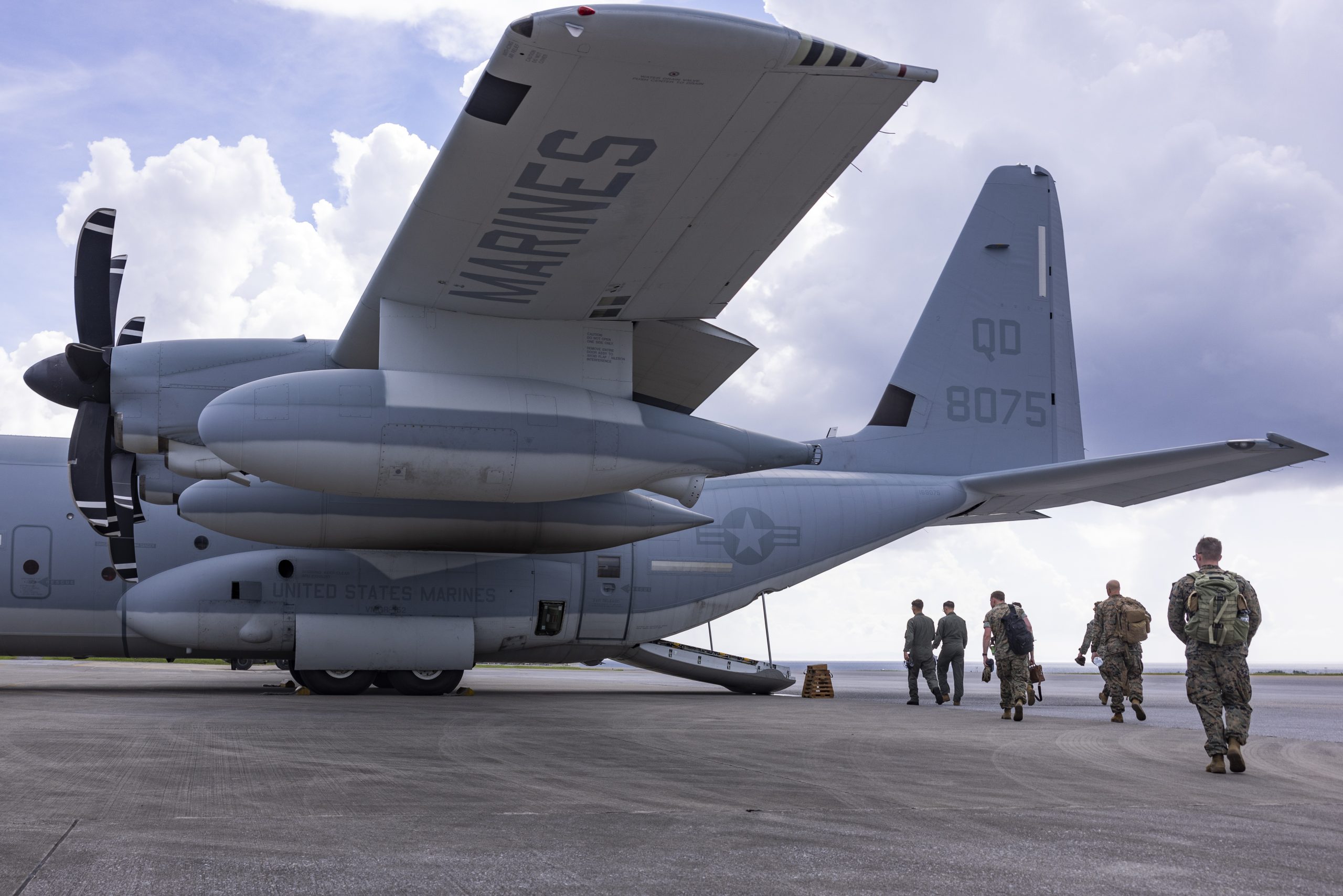
“The KPA will never overlook the rash acts of the U.S. forces and the ‘ROK’ military gangsters” concluded the statement.
In a Thursday release, Japan’s Ministry of Defense said that North Korea launched two ballistic missiles on Wednesday night. The first launch was at 23:38 p.m. and flew about 350 km with a maximum altitude of about 50 km, while the second was launched at 11:46 p.m. and flew approximately 400 km with a maximum altitude of approximately 50 km. As per its normal procedure for such launches, Japan has lodged a protest with North Korea.
U.S. Indo-Pacific Command issued a brief statement that read, “We are aware of the ballistic missile launch and are consulting closely with our allies and partners. While we have assessed that this event does not pose an immediate threat to U.S. personnel or territory, or to our allies, the missile launch highlights the destabilizing impact of the DPRK’s illicit weapons program. The U.S. commitment to the defense of the Republic of Korea and Japan remains ironclad.”
The two B-1B bombers conducted separate drills with the ROKAF and the Japan Air Self Defense Force on Wednesday as part of the routine pattern of response by the United States, Japan and South Korea to North Korean launches. U.S bomber aircraft typically conduct separate joint flights with the ROKAF and JASDF and the U.S. Navy, Japan Maritime Self Defense Force (JMSDF) and Republic of Korea Navy (ROKN). Each deploy an Aegis equipped destroyer for a trilateral Ballistic Missile Defense (BMD) drill. Wednesday’s flights and a BMD drill held on Tuesday were in response to a failed North Korean satellite launch on Aug. 24.
A Korean Ministry of National Defense release on Wednesday stated that the ROKAF and USAF carried out drills with the B-1Bs that day as part of the Warrior Shield joint field maneuvers before the second half of the joint exercise Ulchi Freedom Shield exercise, which began on Aug. 21.. The release also stated USAF F-16 fighters and ROKAF FA-50 fighters accompanied the bombers over the Yellow Sea. This marks the 10th joint ROK-US exercise conducted this year with US strategic bombers.
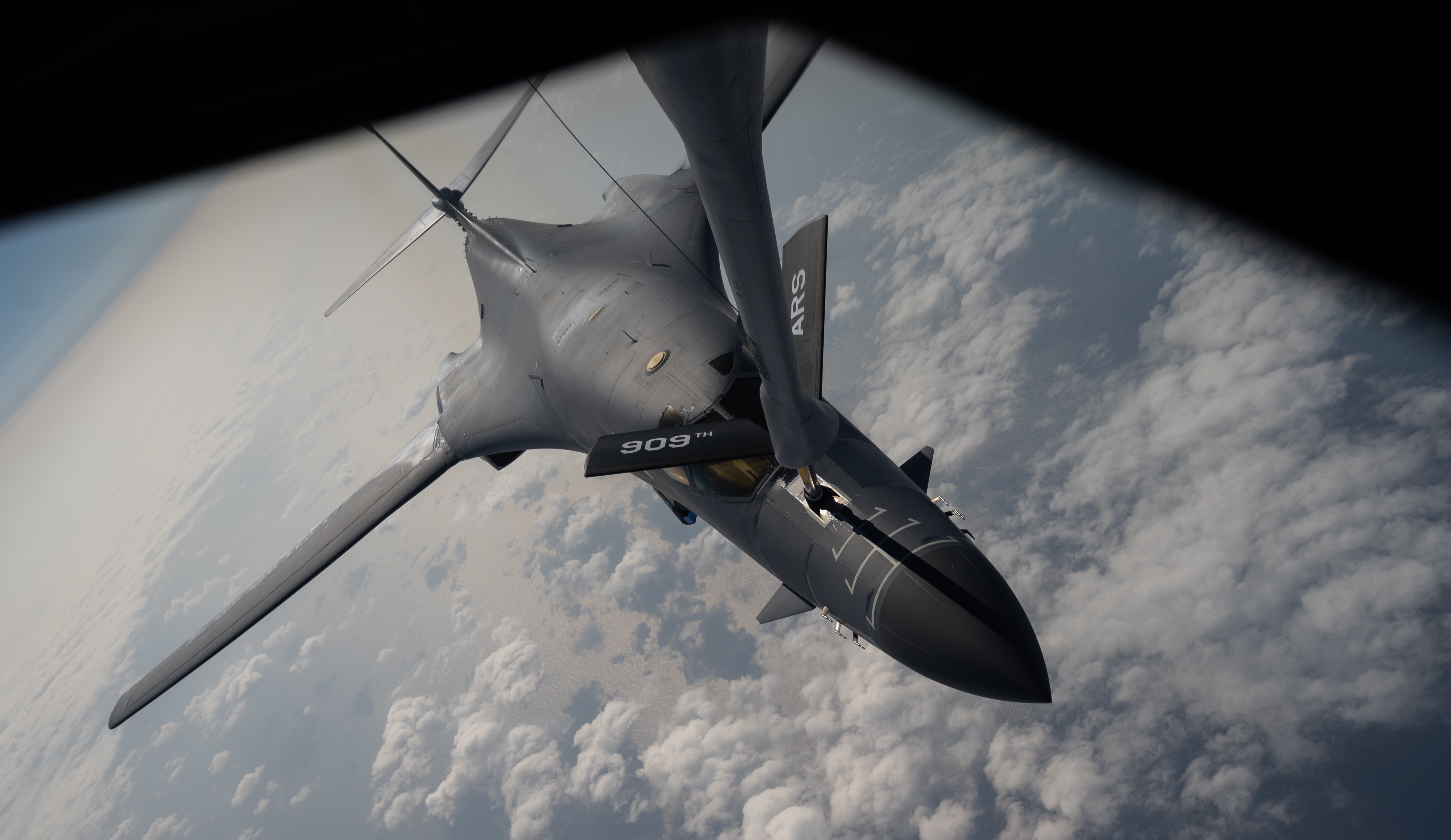
“In particular, this drill demonstrated the ‘activation of extended deterrence’ and ‘firm joint defence posture’ by deploying US strategic assets in a timely and coordinated manner in response to North Korea’s recent claimed space launch (24 August),” read a translated version of the release. “The U.S.-ROK Alliance maintains the best possible joint defence posture against North Korea’s continued actions to destabilise the Korean Peninsula and the region, including its repeated missile provocations, and will continue to respond overwhelmingly to any provocations by North Korea based on the capabilities and posture of the Alliance.”
In a Wednesday release, the Joint Staff Office (JSO) of Japan’s Ministry of Defense stated that four F-15 fighters and eight F-2 fighters from the JASDF carried out tactical exercises with two B-1Bs over the Sea of Japan “amid an increasingly severe security environment surrounding Japan, following North Korea’s launch used ballistic missile technologies by force.”
U.S. Pacific Air Force issued no release on the U.S.-ROK drill and only a short release on the U.S.-Japan drill.
“Two B-1 Lancer bombers with the U.S. Air Force integrated with eight Japan Air Self-Defense Force F-2 fighter aircraft and four F-15 fighter aircraft, exemplifying our alliance’s ability to quickly and decisively respond to threats against Japan and the region” read the release.



